What It Takes To Make a Crag
A big thanks to everyone who came out for the film on Wednesday night. We were able to raise over $1000 for the new Glenwood Climbing program!
Today we’ve got a guest blog from Mike Schneiter on the highs and lows of finding and developing a new crag. Enjoy.
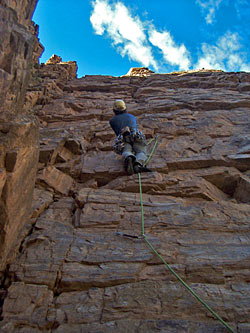 Finding new crags in Glenwood Canyon is a bit like playing the slot machines in Las Vegas. There’s a lot of rock, but it’s a big gamble if you’re going to find good, quality stone and come away a winner. The quartzite in Glenwood Canyon is particularly this way, with pockets of great rock and many stretches of horrible choss.
Finding new crags in Glenwood Canyon is a bit like playing the slot machines in Las Vegas. There’s a lot of rock, but it’s a big gamble if you’re going to find good, quality stone and come away a winner. The quartzite in Glenwood Canyon is particularly this way, with pockets of great rock and many stretches of horrible choss.
After developing the Dead Horse Crag last year, my eyes were opened to other potential crags on the canyon’s quartzite. A section of orangeish-red, compact stone above the popular Glenwood Canyon bike path caught my attention. Geologically, it appeared to be part of the same band that Dead Horse was comprised of but with greater height and no steep overhangs. One snowy winter day I showed BJ my objective but he sounded skeptical because other rock downstream in that same band looked super ugly.
While my friends chuckled and offered polite ridicule of my intentions to explore more of the canyon’s quartzite, I had great faith that a gem was waiting to be found. One afternoon after work, I loaded my pack and made my way to a gully that appeared to provide easy access to the top. Instead, nasty scree slogging was broken by a couple of steep, awkward boulder problems through steep sections, made more difficult by my heavy pack.
On top of my objective I tip-toed around, over, and in between the stacked blocks of quartzite and carefully made my way to the cliff’s edge. A nice horizontal crack ate up a couple of large cams and provided security as I peered over the edge. The rock was better than I could believe, looking hard, compact and featured with ample holds.
My plan was to establish an anchor and rappel the face to take a closer look and begin the cleaning and climbing process, leaving a fixed rope for another day. My hope to use a tree for an anchor proved unreasonable due to the distance from the cliff’s edge and the amount of loose choss my webbing and rope would surely displace. Unable to find adequate cracks for nuts or pins, I reached into my pack for the power drill. I pulled out drill, bolts, anchor material, and wrench but I reached the bottom of my pack without finding any drill bits. Doh!
I really wanted to leave a rope fixed so that I could make the easy hike from the bottom and start climbing the face, but I was uncomfortable leaving my rope fixed to a couple of nice cams. Hence, I cleaned my stuff and hiked down with nothing gained but a close-up look and a few pictures to share with skeptical friends. Determined to avoid the heinous gully I chose another path and picked my way through scrub oak and a plethora of bushes to return to the bike path.
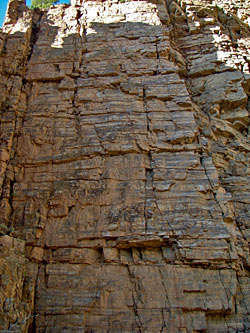 A couple days later I returned, this time double checking the contents of my pack and taking a better path that closely followed my prior descent path. Over the course of several visits I meticulously cleaned, brushed, climbed and bolted a number of lines.
A couple days later I returned, this time double checking the contents of my pack and taking a better path that closely followed my prior descent path. Over the course of several visits I meticulously cleaned, brushed, climbed and bolted a number of lines.
Always working by myself, I had yet to lead any of the new climbs until I lured my wife out to the cliff one afternoon. Highly skeptical of the crag that I was jokingly calling the “Crag of the Century” or “Quartzite Wasteland,” she happily belayed me on four first ascents in one afternoon. Climbing the routes herself, she surprised even me by declaring a couple of the long routes as true classics.
Afterwards, we celebrated with delicious burgers at Glenwood’s old school drive-in, the Charcoal Burger, the inspiration for the name of my favorite route. It was there under the fluorescent lights that the crag developing process had come full circle. It all started with the idea of finding good quartzite in Glenwood Canyon, continued with careful looking up at the many walls, entailed many hours of hiking, cleaning, brushing, bolting and climbing on the new routes, and culminated in one afternoon of first leads and big smiles with burgers in hand around a picnic table. And it was there that another cycle started when I said, “so the other day I saw this section of quartzite cliff…”
One Response to What It Takes To Make a Crag
Bulldog Creek Dog Walk (IV WI 4+)
Hayden Carpenter and Tom Bohanon recently repeated an obscure ice climb on the south side of Mt Sopris. Given a brief mention in Jack Robert’s ice guide, Bulldog Creek Walk is described as being 100 meters of WI 4. What they found was seven pitches of ice in a remote setting that makes for one […]
Connect with Us






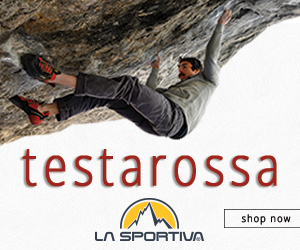

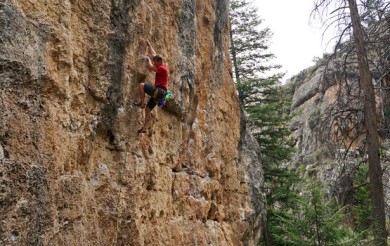
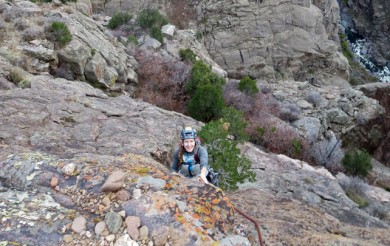
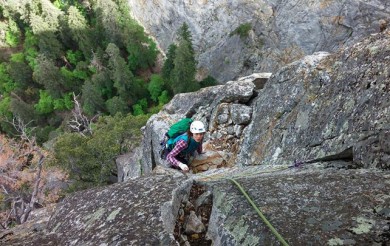
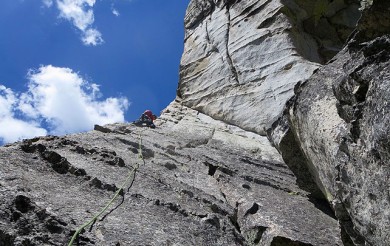



There is certainly something about new routing that reminds me of Chicken Little and her bread baking. It is mostly work done alone, your own personal money spent, the exploration strictly your own, the cleaning, equiping, time, bruises, scratches, and frequently the trail all your own thankless work. But come red-point day, you will have all kinds of folks reafy to lend a hand. In the end it is all this invisible labor that makes so much of climbing possible. Next time I come down myself I’ll pour a brew for you bro, and thank you for another job well done!!!!